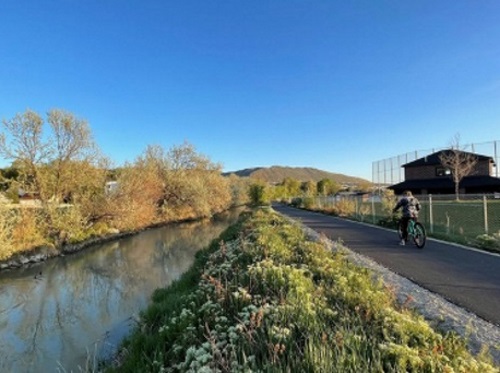A team of Utah State University researchers recently explored how to use the state’s network of historic canal trails as an active transportation solution. That study is poised to help the Utah Department of Transportation and community leaders make decisions about building canal paths and trails, USU detailed in a blog post.
[Above photo by USU]
The Utah DOT funded the university’s research project – entitled “Active Transportation Facilities in Canal Corridors” – that the American Society of Civil Engineers subsequently published in June.
By reviewing case studies of existing canal trails – such as the Murdock Canal Trail in Utah County and the Highline Trail in Cache County – and interviewing stakeholders like canal operators and local planners, the USU team found there are many potential benefits for communities who want to build canal paths and trails.
“One potential benefit of creating a canal trail formally is to formalize that use,” said Patrick Singleton, an assistant professor of transportation at USU and one of the project’s researchers.
“A lot of people are using canals informally as trails in some cases,” he said. “And by formalizing that use, there can be some protections for the canal or the property owners along the canal.”
Building bicycle/pedestrian trails alongside open canals or atop closed canals can also create a “mutual interest” between community leaders and canal operators to keep the corridor clean. In the case of covered canals, a trail can help preserve the canal easement and make it easier to repair the canal if needed.
The research found that the primary challenges to building canal trails are land ownership, maintenance, safety, liability, funding and privacy. These challenges can be overcome using long-term planning, stakeholder collaboration, iterative design and active public involvement.
The school’s researchers said they hope this study will make community leaders more aware of both the opportunity and the steps required to help trail networks succeed.

